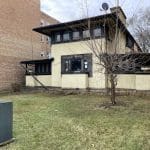At the Richmond Fed, we serve Virginia but also the District of Columbia, Maryland, West Virginia and the Carolinas. We are constantly on the ground working to better understand the economy. Just last year we had over 1,700 community engagements. These meetings take us across our district, from Bristol to Alexandria, Winchester to Danville, and Virginia Beach to Harrisonburg.
Over the last few years, talent availability has become critical for economic development. But wherever we go, from the largest cities to the most remote towns, we hear communities struggling to meet that need because they lack housing. They are short staff in schools, hospitals, child care and local governments. These essential employees all too often can’t find nearby housing they can afford.
In my remarks today, I’ll focus on ways communities — like the ones I’ve spent time with this past year — are working to bring housing within reach for workers. These are my thoughts alone and not necessarily those of anyone else in the Federal Reserve System. And if you’re wondering why the Fed cares about housing, it’s pretty simple. It impacts both sides of our dual mandate — maximum employment, and as has been evident in recent years — inflation.
Homeownership: Further Out of Reach
Let’s start with homeownership, which is becoming increasingly unattainable for too many workers.
Take teachers for example. The math all too often just doesn’t work for them. In 2022, the median middle school teacher made just over $60,000. With that salary today (and without becoming cost-burdened), that teacher can afford a $228,000 house with a 20% down payment. But the median price for a new starter home last year was $299,000, and that’s on the off chance you could even find one.
And the math has been getting worse. Average hourly earnings have increased 21% since 2019. But one measure of home prices (Case-Shiller) has increased nearly 48%. At the same time, of course, mortgage rates rose from 3.9 to almost 8% today. Why did prices spike so much? Demand and supply.
Demand was picking up prior to the pandemic but really took off in the last three years. Nothing makes you more aware of the flaws of your current residence (or roommate) than spending every waking moment at home. So, with interest rates low, people started looking for new places to live, with fewer people per household. Millennials began to settle down. Institutional investors added to demand, as did second-home purchasers.
But the buying frenzy ran into constrained supply. Construction costs (including interest rates) increased, and the shortage of skilled trades worsened. Timelines got extended as garage doors, counters, appliances and windows became hard to track down. At the same time, fewer existing homes are being listed, as older Americans opt to age in place and homeowners choose not to trade into higher-rate mortgages.
Renting: Still Prohibitive
All this means that it’s now significantly cheaper to rent than to buy. But the math for renting also isn’t great. Supply and demand hit the rental market, too. In 2021, rents spiked as national rental vacancy rates dropped to levels not seen in almost 40 years. Our same teacher looking for a place to live in 2019 would have faced a median asking rent of $1,643 per month, already a stretch for their budget. Now, that sum is up 22% to $2,011. I will note that we are now seeing some relief in rent growth nationally, as construction has brought more units online.
Making the Math Work
We need to make the math work better, both for homeownership and renting. But how? Well, subsidizing current prices at a wide scale will only increase demand further, worsening the imbalance with supply. Suppressing demand isn’t an attractive option either. So, that leaves us with the need to increase housing supply. Everyone is struggling with this issue, but we can learn from each other. For those of you with a competitive spirit, both South and North Carolina have issued more permits for private, single-family homes than Virginia in each month since 2016. What are we seeing work?
First, communities need to rally together.
While the need for more housing may be obvious to us, it often isn’t to those who don’t want their town to change, or who don’t like the specific change being proposed. They understandably worry about environmental impacts, or infrastructure capacity or school crowding. NIMBYism is real, and failing to secure buy-in from the community adds time, cost and uncertainty. How do leaders rally their communities?
They articulate the case for housing. The community needs to see housing as integral to economic growth, and regional leaders need to speak with one voice. A good example is the I-68 Regional Alliance, an economic development organization that formed a housing coalition linking rural counties in West Virginia, Maryland and Pennsylvania.
They also acknowledge and address legitimate concerns. Cecil County, Maryland, did this by mitigating stress about the area losing its rural identity. It created a development plan that restricted growth to a “growth corridor” along the freeway, allowing the rest of the county to retain its character.
Second, communities need to recognize they are competing for developers.
Developers can go wherever they choose. These days, they are scarce, and they are rational. Most will go where the upside is highest and the risk is lowest. To get more housing built, jurisdictions need to communicate that they welcome and support investment. What might that look like?
Unsurprisingly, financial incentives never hurt. In 2022, Wise County implemented a tax incentive for renovation, rehabilitation or replacement of residential and commercial properties. In West Virginia, the newly created Build WV program offers a tax exemption for purchasing construction materials, a 10-year property value tax credit, and the potential for a business and occupation tax exemption. And I have heard Virginia is exploring a developer incentive tied to business recruitment as well. Incentives can be targeted in order to attract developers that will build the type of housing the community needs.
But it’s not just about money. Developers will go where they can expect cooperation and efficient, predictable timelines. Streamlined permitting helps, as does reducing unnecessary regulation. Ensuring sufficient municipal staffing can also minimize processing and approval timelines. We heard from a group involved in comparable projects on the Eastern Shore of Maryland and nearby Delaware. The Delaware project progressed much faster. The community did a better job processing permits, and its regulatory standards were clearer. But the most important difference was local support. In Maryland, development was slowed by environmental and zoning challenges that delayed the permitting process, added cost and increased uncertainty.
Third, communities need to work the biggest barrier and the greatest incentive: land availability.
In 2022, finished lot costs made up nearly 20% of the average sales price of a new single-family home, so minimizing these costs can go a long way. In fact, in the few communities in which housing availability seems less of an issue and the national homebuilders are everywhere — for example, eastern North Carolina — contacts have pointed to easily available and affordable land. What are communities doing to make affordable land more available?
Start with zoning. Rezoning unlocks underleveraged land for higher density development. That’s what we saw in a Harrisonburg partnership between the local housing authority and EquityPlus, LLC. And several jurisdictions, such as Raleigh, North Carolina, are looking to accessory dwelling units to expand supply in already built neighborhoods.
Invest in buildable homesites. States have gotten in the habit of preparing buildable industrial sites to attract businesses. Why not put a similar investment toward buildable homesites available for residential developers? We’ve seen communities, like the City of Sanford, North Carolina, do this in concert with a particular development partner. Perhaps it could be done even earlier in the development cycle.
Leverage unused land and structures. Many communities are repurposing older structures that are no longer in use to build apartments. Carroll County transformed a historic school into 51 new units. Fayetteville, West Virginia, is retooling an elementary school. In Cumberland, Maryland, it is an old hospital. Danville is transforming an old textile mill into a retail space and 150 apartments. Once you start thinking of the possibilities, it is hard to stop, and I know Virginia has efforts underway to look at all state-owned land that could be used for housing.
Purchase to repurpose. Another way to maximize availability is to prevent older housing from leaving the market. Some localities are purchasing and converting private dilapidated structures. This process often requires tracking down absentee landlords and clearing up titles. Several towns in West Virginia have used land banks to take ownership of abandoned properties and put them in the hands of developers.
Fourth, if construction costs are the challenge, tackle them.
In 2022, construction costs were three-fifths of the average sales price for a new single-family home. These costs are way up and may well stay up. With that reality, can the same housing be built for less? Well, there hasn’t been meaningful productivity growth in the construction sector in decades. Turning that around would be a good start. Until then, we might ask a different question: whether we need to make “the same homes.”
Can we make smaller homes? Homes under 1,400 square feet have fallen from 14% of new, single-family homes built for sale in 1999 to only 3% today. Could that change? It’s worth noting that this is another area where zoning matters. Minimum lot sizes may discourage smaller builds.
Can we make a different type of home? In Hagerstown, Maryland, they are standing up a new community of factory-built single-family homes with smaller units starting at $250,000. These homes look like typical single-family homes, but they are built more quickly and affordably. And, importantly, because they are built in a factory, they reduce the need for skilled tradespeople on location. While promising, this path has its challenges, such as negative perceptions and zoning limitations.
Finally, communities need to look to unconventional partners.
A number of nontraditional partners are helping improve the math throughout the Fifth District.
Foundations are engaging. In North Carolina, the Golden LEAF Foundation is providing up to $6 million to help finance tax credit projects for federal low-income housing in collaboration with the North Carolina Housing Finance Agency. They are also working with the state disaster recovery agency to fund infrastructure for new housing outside of the 100-year floodplain. And they are partnering with Bertie County and the State Employees Credit Union Foundation to finance new housing units exclusively for teachers and state employees.
Employers are increasingly investing too. If you think back to the company town era, businesses used to invest in housing for their employees. Those days may be returning. We hear resorts in West Virginia, Pennsylvania and the Northern Neck are building housing for their employees. In northern Virginia, Amazon is investing to support new housing, too.
Colleges have a lot of potential. Students need housing too, and presumably, new dorms free up space for others. In 2022, Southwest Virginia Community College became the first in the state to offer housing, and there is a lot more potential to add housing on community college campuses if states are willing to clear the barriers to building.
Even churches are getting into the game. North of Charlotte, Wesley Community Development is working with area churches to convert surplus church property into housing. Several local parishes, including Caldwell Presbyterian, have partnered with the city to build affordable housing; they have donated land, properties and direct funding.
To close, we all know housing availability is limiting communities. The key is more supply. To create that supply, communities need to own the problem, compete for developers, innovate in offering affordable land and lowering costs and engage with nontraditional partners. As I said upfront, this is a math problem — but one where potential solutions are beginning to multiply.
Tom Barkin is president of the Federal Reserve Bank of Richmond. This article is adapted from a recent speech delivered before the 2023 Virginia Governor’s Housing Conference in Hampton, Virginia.












